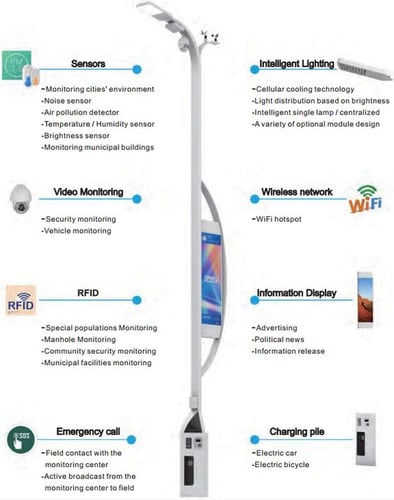Value Vector
Why Some Smart Cities Succeed While Others Struggle
Sandra Mueller

By 2030, sixty percent of the global population will live in urban areas, and one in every three people will live in cities with at least half a million inhabitants. Connected technology enables city landscapes, spaces and services to monitor, track and measure their populations; bundled up in a suite of internet-connected infrastructure that provides measurable insights, information and services for professionals, visitors and residents alike.
.jpg?width=391&name=Soofa+(1+of+3).jpg)
Many cities have spent part of the last decade embarking on ambitious, smart city projects that aim to make cities not only responsive, but 'smart' and predictive of the needs of their inhabitants. A range of this smart infrastructure has IoT embedded in it, including smart kiosks, parking, transport systems, weather monitoring, waste control, lighting and traffic controls. Cities connect their infrastructure to deliver urban services more effectively, save money and provide a means to engage with citizens, visitors, and local businesses. Successful cities are typically part of research programs, pilot studies and funding recipients or the result of the investment of big companies such as Cisco, Intel and various telcos and utilities. But what happens when the funding dries up, and the research projects end? It is often not until this point that problems with legacy decisions emerge.

Cities need connected operations and infrastructure and a unified vision
A successful smart city requires careful consideration. Smart cities fail when programs are siloed, fragmented and poorly planned without consideration for concurrent and subsequent initiatives. Interoperability plays a significant role in driving the end-value of IoT implementation.
Amsterdam, arguably considered Europe’s most successful smart city, has the world’s first iBeacon Living Lab and public LoRaWAN. The Amsterdam Open Beacon network launched in September 2016, spreading 300 beacon sensors across the city. 'Citizen Developers' can use the network for free, integrating it into their own applications.
The UK City of Bristol was recently awarded the Judges’ Choice Smart City Award at the GSMA’s 2018 Global Mobile Awards. They were commended for Bristol is Open, a joint venture between the University of Bristol and Bristol City Council. Three networks are integrated through software-defined control: fiber in the ground; a wireless het-net along the Brunel Mile area of Bristol with wi-fi, 3G, and 4G; and a radio frequency mesh network deployed on 2,000 of the city’s lamp posts. Alongside, the University is carrying out 5G research and delivering the UK’s first 5G urban deployment. This platform is allowing companies of all sizes to come and test new technology in a real-world environment rather than just inside a laboratory.
Both cities demonstrate the value of an underlying structure which involves thoughtful consideration of future tech, cross-discipline collaboration, open test grounds, and meaningful connections.
A combination of funding models needs to exist
In 2016 research published by Lucy Zodian covering smart cities across England, Wales, Scotland, and Northern Ireland found that local councils were failing in their efforts to progress successful smart city initiatives. Most were struggling to prioritize initiatives that could improve the lives of citizens and residents and in many instances, save money. These included predictive analytics such as smart waste management; the use of connected street lights to ensure citizen and tourist safety and reduce petty crime; and the use of emergency warning systems during natural disasters. Common barriers identified included an inability to securing funding and resourcing at a time of budget cuts, and a lack of collaboration between services and departments hindering progress.
The research indicated that the UK risked a three-tiered approach to smart cities delivery, with those early-adopters who have secured funding striving ahead, leaving those without resources unable to make progress, and many more still yet to grasp the potential benefits available.
Notably, successful councils were mostly those who secured external funding such as the Horizon 2020 EU fund, an option that will presumably be no longer available after Brexit. For smart cities to thrive, there needs to a range of funding options, including collaboration with infrastructure providers and utility providers who are in it for the long haul, and a variety of fundraising and investment models, not simply grants and hand-outs.
Smart cities need to be by the citizens not just for the citizens
While it is true that we elect officials with the intention to do good work on our behalf, there is also the need for meaningful engagement, consultation, and connection with citizens. This is pertinent when you consider that smart cities are collecting citizen data (without citizen payment – that’s scope for a future blog post) and most operate under the principles of open data, using the internet as an open portal to connect with residents and visitors. Smart cities are not just places but homes for many who need to be first and foremost in smart city planning.
Are you involved in creating smart city solutions? Contact us to find out how we can assist you in your efforts to create meaningful technology that increases the value of cities and enhances citizen engagement.



